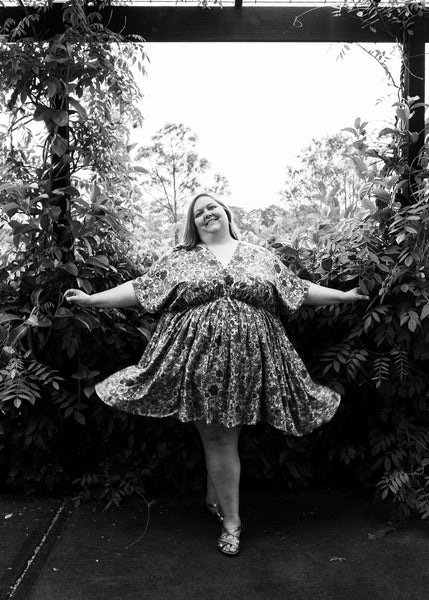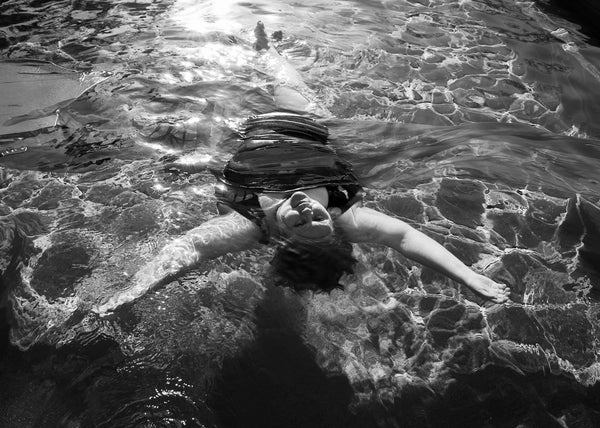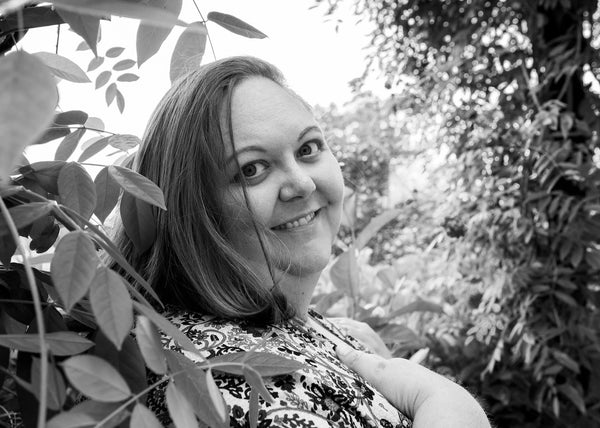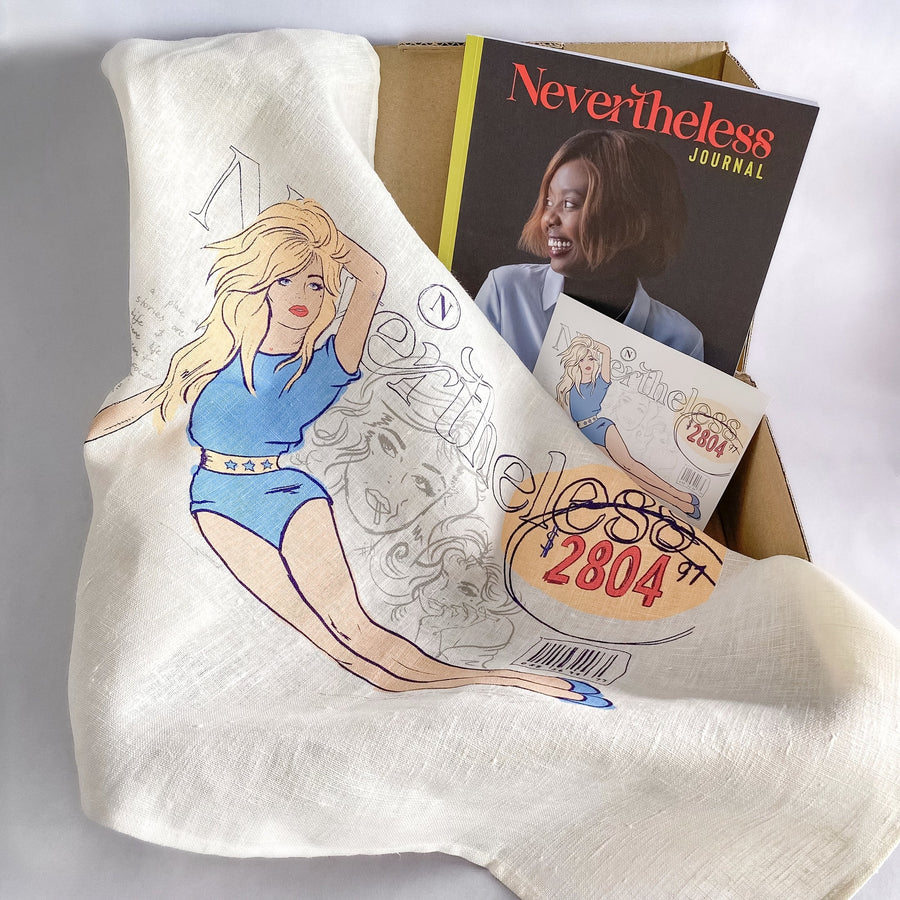There I Am: Finding body peace through photography

Words by Bronwyn Mitchell
Photos by Marina Meier
Towards the end of 2022, after three exhausting years of surviving not only a pandemic but also enduring tiresome diet-culture fearmongering around ‘covid kilos’, I was fortunate enough to join a group of amazing women for a body-positive retreat in the Hunter Valley.
The retreat was run by Sydney psychologist Louise Adams for members of UNTRAPPED, an online program and community of compassionate, smart, funny and feisty women who support each other through unlearning and untangling a lifetime of beliefs about body size, health and self-worth. While many of us check in with the group regularly on Saturday morning Zooms, the retreat was the first in-person gathering since the long weeks of lockdowns, border closures and travel restrictions of the preceding years.
Over five days, we explored the complexities of intuitive eating; engaged in joyful movement with hula hoops with a personal trainer who focuses on movement for mental health; painted rocks with body-affirming messages; and talked anti-diet advocacy in healthcare, in the workplace, and with family and friends. We swam, drank wine, did gentle chair yoga and meditation, and allowed ourselves to rest and reset, all while wrapped in a protective anti-diet bubble that kept the relentless body hierarchy of the outside world at bay.
Perhaps the most transformative part of the week for me, however, was a personal photo shoot with professional photographer Marina Meier. Marina’s Naked Face Photography project and Every Body is a Beach Body initiative have helped hundreds of women learn to embrace the experience of getting in front of the camera in whatever size and shape body they have. Although she once nearly gave up photography because she was saddened by requests from clients to edit out perceived flaws, Marina now helps people reconnect with themselves through the medium of the black and white image — and she refuses to use Photoshop to ‘fix’ bodies that need no fixing.
Photography is something we talk a lot about in UNTRAPPED, and almost everyone has at some point had a negative relationship with photos of themselves — sometimes they are the trigger for spiralling into shame, self-judgement, anxiety, depression, or disordered thoughts and behaviours around food. One strategy we’ve talked about, however, is replacing the unkind voice with one that simply observes: ‘There I am’. There I am at my niece’s birthday party. There I am at family Christmas. There I am at the pool, and those are my arms, and that’s my stomach, and those are my chins, but this person is me, and that is my body, and … there I am.

Several years’ work trying to change my internal monologue around my body size and unlearn decades of internalised shame is still, as it turns out, not yet enough to avoid being triggered by photos. I’m better than I used to be with having my picture taken, but shame sneaks up on me — especially with candid photographs, or any image in which my large body is juxtaposed with much smaller bodies. I drove home from a choir rehearsal last year stinging with shame after seeing a photo of the group that was taken by a friend standing behind and slightly to the side of me (probably the least flattering angle from which to photograph anyone, never mind the largest person in the room who was nearest the camera and also happened to wear red that day). I spent two hours making music that fills my soul, and yet that sense of peace and calm vanished in an instant.
The immediacy of digital and the ubiquity of smartphones means there is a much smaller window of time than there once was between the moment a photo is taken and the moment we see it. Mere seconds, sometimes. I’m sure many people find this immediacy appealing, but for me, and perhaps other who have struggled with negative body image, I think it can come with one very big downside. It takes us out of whatever joyful, embodied experience we were engaged in — singing, laughing, having cuddles with a newborn baby — and delivers a gut punch instead: is that really what I look like? The practice of ‘there I am’ allows me to replace that thought with something much kinder. But like any practice, it is a work in progress.
Marina was a delight to work with. She brought a quietly affirming presence to the retreat, meeting with each of us before our photo sessions to discuss our hopes and expectations of the shoot, what we might wear, what aspects of our personalities we hoped the images would capture, and anything we were nervous or anxious about.
As we walked together around the grounds of the property, a beautiful wedding and events centre nestled in the heart of wine country, Marina came alive with a camera in her hands. She directed gently but confidently, and each time a new pose or gesture gave her the image she was hoping for, she gave a small fist pump accompanied by a beaming smile and an exuberant ‘Yes!!!’ This alone felt miraculous to me, that photographing my body could elicit this joyous reaction in anyone.
I chose a flowing, paisley-print summer dress I’d made for myself, because sewing my own clothes has played a significant role in my journey towards body acceptance, and it was important to me that the photos express my creativity in some way. I also wanted to be outdoors, which is usually where I feel most embodied, attuned to how my skin receives breeze, sunlight, water, or the sensation of brushing lightly against leaves or being barefoot on grass. And without really thinking about it, I added that I hoped my photos would capture kindness — that after decades spent denying kindness to my body, I could take this opportunity to repair that relationship and to record visually what I have spent the last few years practising internally.

By the time I finally took myself to therapy in my late thirties, negative body image had hijacked my internal monologue for decades. I was so disembodied that I lived only in my head, and I could barely even say aloud the words ‘my body’ without a wave of self-loathing crashing over me. It wasn’t myself that I disliked, or so I thought, and I wouldn’t have expressed it that way. But such was the extent to which I had mentally separated my ‘self’ from the physical form in which I existed in the world that I couldn’t acknowledge that my body is me, and I am my body.
I was perhaps nine or ten when I first became conscious of my body being larger than the bodies of my peers. This was fuelled, as it so often is, by remarks from family members, teachers, classmates and their parents. In my teenage years, I would start thinking about my body size more than I thought about almost anything else. This was the start of several years of disordered behaviours around food, a lot of which I hid from my family. But my body size itself was an inescapable, obvious problem that warranted dreaded appointments with intimidating medical specialists, one of them a professor who prescribed me weight-loss drugs in Year 12 and put me on meal-replacement shakes so vile that I’ve never quite forgotten the memory of their taste and texture.
Years later, I can honestly say that these appointments achieved nothing except to exacerbate my shame. The diagnosis was fatness, but there was nothing medically wrong with me. But I felt the scrutiny of my size, and it forever changed the relationship I have with my body. Once we leave early childhood behind and become aware that not only are other people observing our bodies but also voicing opinions about them, it’s impossible to return to a time when we were oblivious to this gaze, and to a hierarchy of bodies that deems thinner bodies to be better, healthier, more desirable and more worthy than fatter ones.
As a society, we are incredibly resistant to changing our minds on this topic. It is so ingrained in our thinking, and the power structure so entrenched, that even with the rise of body positivity in recent years, most people would — consciously or unconsciously — place an upper limit on the size body they are prepared to extend this positivity to. My body is one that even high-profile advocates of body positivity are quick to assure the world that they are not ‘encouraging’ or ‘promoting’. At the same time as we are starting to have a long-overdue national conversation about body image, especially the damage to a person’s self-worth over decades of feeling shame about their body, the parameters have already been set to intentionally leave out the voices and experiences of those in the largest bodies, who have likely been on the receiving end of the most stigma for their size.
Every time a barely plus-sized person defends body positivity by saying that they're not encouraging obesity, it throws fat people under the bus. I'm so tired of body positivity needing to be made palatable for thin people who want to continue to justify their fatphobia. We still have such a long way to go towards true inclusion, diversity and representation of all types of bodies — all sizes, all ages, all colours, all abilities and all genders. Body liberation with caveats is not liberation.
And this is why the UNTRAPPED group, particularly the recent retreat, has been so essential to my emotional wellbeing over the past few years, and to finally finding some sense of peace in my relationship with myself and my body. Grounded in self-compassion and the principles of Health at Every Size®, this phenomenal community is not like any group I’ve ever been a part of. All bodies are welcome. All bodies are valuable. All bodies deserve love, respect and kindness. All bodies need nourishment and rest. The sense of connection this community provides is everything I never knew I needed, and it’s no exaggeration for me to say that joining this group has been easily one of the best life decisions I’ve ever made. I love that we show up and hold space for each other for everything we’ve been through in our bodies. We are different sizes, different ages, come from different backgrounds and locations within Australia and have different life stories, but together we are leaving behind the diet culture swamp and choosing to practise body kindness and trust our body’s wisdom.

Reflecting later on the experience of the photo shoot with Marina, I thought back to an episode of the Food Psych podcast (#220) where Christy Harrison speaks to Health at Every Size® co-founder Deb Burgard, a psychologist and activist who was instrumental in the fat acceptance movement in the 1980s and 90s. There is a moment in the conversation when Deb talks about people in larger bodies ‘not having had an experience of your body as something that’s cherished, and that the culture says, we’re going to help you take care of this’.
I keep coming back to that word, ‘cherished’, and I still get teary when I reflect on how absent both the word and the concept have been in my relationship with my body. These are not messages I ever received about my body, and I know many people who would say the same. This is one reason why fat activists talk about the importance of listening to those with lived experience of fatness. Because at the moment, there is a glaring omission in the research about our experiences, how it affects us over the course of our lives, how it affects relationships with people around us who can’t accept our larger bodies, or who accept them only begrudgingly.
On the last night of the retreat, after Marina had met with each of us to reveal the images from our personal photo shoot, the group gathered to watch a slideshow montage of our combined portraits. The first frame showed me, floating on my back in the pool, ankles crossed, arms outstretched, supported and embraced by the clear water. Another woman strode towards Marina with both the confidence and elegant poise of someone who has been through tough times and emerged stronger and wiser on the other side. Others were backlit by late-afternoon sun, or captured mid-laugh. One woman had chosen to be nude; another was singing, her face turned to the sky as her lungs channelled air and turned breath to music.
The impact of seeing all of us together, and knowing something of each woman’s story and the vulnerability and bravery they showed in stepping in front of the camera, was such a powerful moment for me. I thought about how everyone looked completely and 100% themselves, their faces radiating joy. We have all been through such different life experiences, and we are all on different journeys in our relationships with our bodies, but we are also on the same journey — the one that leaves behind the voice that tells us we have to change our bodies to be OK, and the one that moves towards a place of peace and acceptance, where we can look at a photo and say ‘Oh, there I am!’ and really like the person looking back at us.


